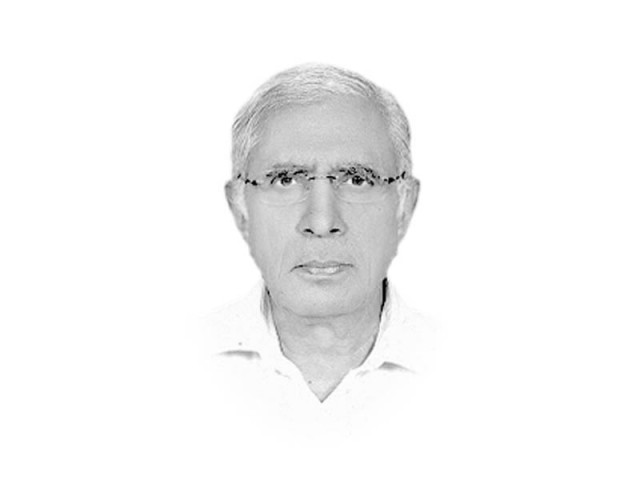More than half empty
A major reason behind the fall in exports is said to be the absence of an enabling environment for businesses

The writer served as Executive Editor of The Express Tribune from 2009 to 2014
The Federal Board of Revenue (FBR) is said to have provisionally collected Rs1800.50 billion during July-February against Rs1538 billion during the corresponding period of last fiscal year, reflecting a growth of 17.1 per cent. But going by the revenue collection target of Rs3,104 billion budgeted for the current financial year the government faces an uphill task of collecting another Rs1,300 billion in the remaining three months.
The GDP growth target fixed for the current fiscal year was 5.5 per cent but at best the achievement is not likely to go beyond 4.5 per cent if at all by the end of the year. Meanwhile, the IMF has estimated that the budgetary deficit might hike to 4.6 per cent of GDP against the target of 4.3 per cent. The IMF has assessed that the Public Sector Development Programme (PSDP) at the federal level was expected to be slashed down from Rs663 billion to Rs636 billion in order to achieve the desired budget deficit target.
The most disappointing performance during the year, however, has been that of foreign trade. Exports have plunged to a five-year low to $15.60 billion in the first nine months of the current fiscal year, a decline of 12.92 per cent from $17.92 per cent in the same period last year, bringing foreign currency reserves under pressure. Both exports and imports contracted in July-March 2015-16, but the pace of decline in exports was three times faster than imports.
The trade deficit has widened 5.5 per cent to $16.9 billion. It was $882 million higher than the gap in the corresponding period of previous fiscal year and was also more than the remittances the country received during the period. Trade deficit increased 20 per cent in March 2016, given the growth in imports and a drop in exports.
The declining trend in exports has been a recurring feature over the last few years. Last year exports were down to $23.9 billion missing the target by $3.1 billion. In the last year of the PPP government, the exports had increased to $24.5 billon.
The decline in exports is being attributed to decrease in international prices of commodities and increase in cost of production due to increase in energy and other input costs. Also, since assuming office in June 2013, the incumbent government has slapped Rs830 billion additional taxes and most of these taxes are regressive, making exports uncompetitive in international markets.
The country’s foreign currency reserves are also taking a hit from the slower-than-anticipated growth in remittances which in the first nine months showed only 4.1 per cent growth. In March, the inflow of workers’ remittances amounted to $1.5 billion, 3.14 per cent lower than February 2016 and 8.7 per cent lower than March 2015.
The trade deficit widened despite a $3.1-billion bonanza that the country received in the shape of a sharp fall in the oil import bill due to a plunge in global prices from July to February. Oil imports during the eight months amounted to only $5.1 billion.
A major reason behind the fall in exports in the current fiscal is said to be the absence of an enabling environment for businesses, competitiveness concerns in the wake of a fall in cotton prices, appreciation of the real exchange rate, power outages and an unfavourable business climate. Weakening global commodity prices, shift in demand patterns in leading markets, exchange rate issues and slowdown in Chinese economic growth were also cited as factors that primarily contributed to the decline in exports. Besides textile products, exports of basmati rice, plastic materials, cement, machinery and jewellery also went down.
But so far there appears to be no move on the official front to stop the rot and take steps to revive exports by diversifying exportable surpluses and markets.
Published in The Express Tribune, April 16th, 2016.
Like Opinion & Editorial on Facebook, follow @ETOpEd on Twitter to receive all updates on all our daily pieces.














COMMENTS
Comments are moderated and generally will be posted if they are on-topic and not abusive.
For more information, please see our Comments FAQ